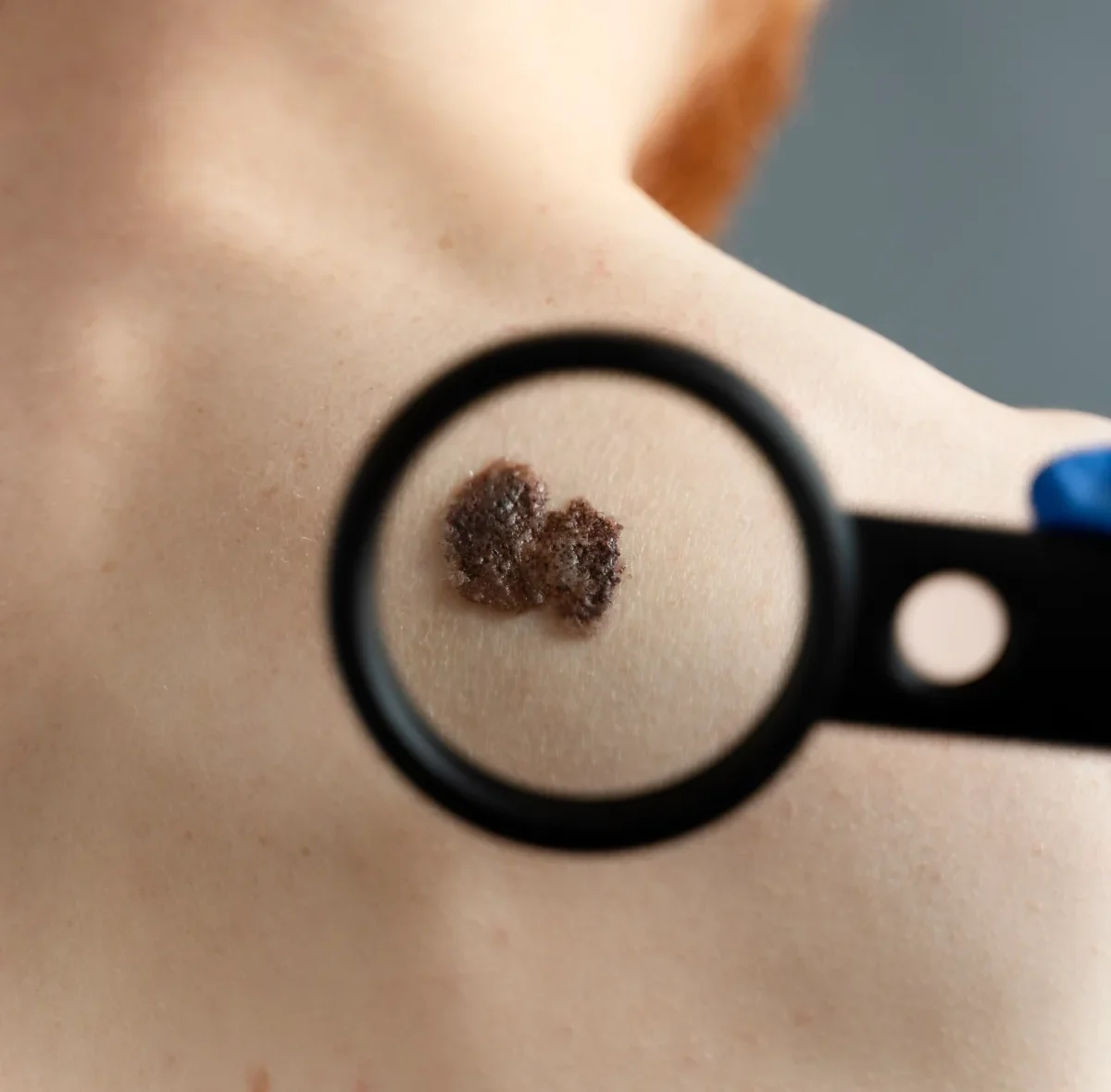
Medical Weight Loss Explained
A lot is said about medical weight loss but we are here to debunk the myths for you.
Dermatology > Mole & lesion removal

Find Out More


Moles are usually harmless and do not need to be removed unless they show irregularities, become suspicious, or change over time, potentially indicating skin conditions or cancer.
In such cases, a doctor may advise having the mole removed for safety, and to ensure peace of mind.
In some instances, certain moles or lesions can cause discomfort or irritation, especially if they are in areas prone to friction. Removal can help alleviate these issues.

A mole is a common, usually benign skin growth that appears as a small, brownish spot or bump. Moles can vary in size, shape, and colour and are made up of melanocytes, which produce the pigment melanin.
Most moles are present from birth or develop during childhood or early adulthood. They can change over time due to sun exposure or hormonal changes. It is important to monitor moles for any changes in size, shape, or colour.
If a mole becomes problematic, it can be removed through shave excision, where it is levelled with the skin and cauterised to stop bleeding. This also allows for laboratory testing to check for precancerous conditions. Laser treatment is another option, but the mole should be tested beforehand. Excision, where the mole is cut out, is also possible.
A lesion is an abnormal area of tissue that can occur in or on the body. Lesions can vary widely in appearance, type, and cause, ranging from benign (non-cancerous) to malignant (cancerous). They might be caused by infections, injuries, inflammatory conditions, or tumors.
There are various methods to remove lesions. The choice of treatment depends on the lesion’s type, location, size, and whether it is benign or malignant.


Cosmetic reasons often drive mole or lesion removal. While many moles are benign, some can be large or unsightly, impacting your appearance and confidence. Removing them can enhance your skin’s smoothness and clarity.
Health considerations are also important. Suspicious or changing moles might indicate skin conditions or cancer, so early removal can prevent complications and provide peace of mind.
Comfort is another factor. Moles or lesions in friction-prone areas can cause discomfort or irritation. Removing them can alleviate these issues and improve overall comfort.
Skin lesions can vary widely in appearance and cause.
Use our online booking engine or book your test by giving us a call.
On the online booking engine select the “appointment type” you need.
You will be seen by one of our friendly doctors or trained clinicians.

Be prepared to provide your full medical history, including any allergies, medications, and previous skin issues. Your doctor will examine the mole or lesion and discuss the best removal method. They may also explain the potential risks and benefits. Follow any pre-procedure guidelines provided by your clinic, such as avoiding certain medications (e.g., blood thinners) or skincare products. Keep the area protected from the sun to avoid complications. If you are undergoing a procedure that requires sedation, arrange for someone to drive you home.

You may be asked to change into a gown, and the area of the lesion will be cleaned and marked. Local anaesthesia is usually administered to numb the area. The mole or lesion will be removed using a suitable method (e.g., excision, cryotherapy, laser). The choice of method depends on the size, type, and location of the lesion. The area will be cleaned, and a dressing or bandage will be applied.

Follow the clinic’s instructions for caring for the wound. This may include keeping the area clean, applying prescribed ointments, and changing dressings as directed. Over-the-counter pain relievers can help manage any discomfort. Avoid activities or products that could irritate the area, such as strenuous exercise or certain skincare products. If the removed tissue is sent for a biopsy, results will typically be available in a few weeks. Your doctor will discuss the findings with you and any further steps, if necessary.
Incorporated
in 1998
Experienced doctors & a professional team
Registration
not needed
Up-to-date with the latest treatments & testing
Strictly
confidential
Experienced doctors & a professional team
Affordable private
health care
Transparent fee structure with no hidden charges
We work with experienced consultants & healthcare professionals who have received positive feedback from our patients, and with whom we have established long-term relationships.
Latest Episode
Tune in to our podcast to explore the world of healthcare and learn from distinguished special guests. We cover everything from preventative measures to cutting-edge treatments so that you can stay informed and up-to-date on health-related things.

A lot is said about medical weight loss but we are here to debunk the myths for you.

Tourist in London and need a GP? Get fast, private care for illnesses, injuries, or lost medication. No registration needed.

With NHS appointments harder to access, many people are turning to private GPs for faster, more convenient care.
Subscribe for latest updates & news


From same-day private GP and blood test appointments to visa medicals, a sexual and reproductive health clinic, and preventative health screenings, we are here to help.
Contact Us
Accepted Insurance Companies






Please note that Walk-in Clinic is a private medical centre & not an NHS service. Harley Walk-in Clinic Ltd company registration no. 07472804